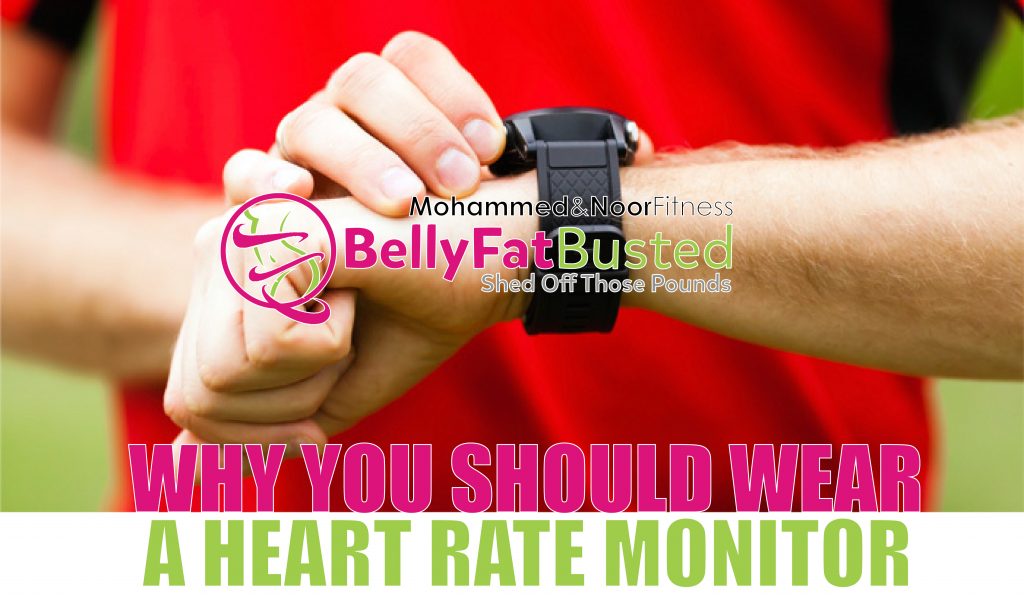
Your heart is the most important muscle in your body. It delivers oxygenated blood from your lungs to the rest of your body and, as you’re aware, oxygen is the primary ingredient keeping us alive. Like any muscle, the heart needs to be exercised. Monitoring your heart rate is a way to keep yourself working in the right “zone,” reducing your chance of injury and overtraining, and increasing the odds that you’ll get the results you want. However, this is only important during certain types of exercise. Let’s look at what they are, as well as when you don’t need to pay attention to your monitor at all.
Heart rate monitors measure your cardiovascular and physiological stress during training sessions. They provide you with a gauge of how intensely you’re exercising, which is reflected in your heart rate. The harder you exercise, the higher the heart rate goes. When your heart rate changes, it’s a sign that something is happening. By monitoring your heart rate, you can make sure certain types of workouts are effective, when you are over or undertraining, and even when you may be getting sick and need to back off.
How Do I Understand My Heart Rate Monitor?
These days, heart rate monitors come in many shapes and sizes. Some simply show your heart rate, time of day, and offer a stopwatch function. Others measure the wattage you’re pushing on your bike, count every step you take, map and measure every place you go and show it off to your friends (or coach) on the Interweb. Provided you learn to use these features right, they all have potential to help you get fitter. Today we’ll stick to main function, which is simply to count the number of times your heart beats.
Heart rates are measured in beats per minute (bpm). Your resting heart rate indicates your basic fitness level and is defined by the number of times your heart beats per minute while your body is at rest. In general, the fitter you are the less effort, and fewer beats per minute, it takes your heart to pump blood to your body at rest. I say in general because part of this is luck. We’re born with varying genetic capacities for this process, so you should only measure your heart rate versus your own, and not someone else’s, because you can be fitter than someone who has a naturally lower heart rate.
To get used to using yours, start by measuring your resting heart rate immediately after waking up and before you get out of bed. Yep, this means you wear your monitor to bed until you understand the process. Take these measurements for five consecutive days and find the average. This average is your resting heart rate. Resting heart rate is dependent upon your fitness, along with lifestyle factors like quality of sleep, stress level, and eating habits.
The term maximum heart rate (max HR) is an estimation for the number of times your heart can beat in one minute. It’s used to estimate workout zones, meaning many calculations assume you know yours. An accurate max HR should be tested in a lab setting. In lieu of lab testing, use this formula:
Women: 226 – your age = your age-adjusted max HR
Men: 220 – your age = your age-adjusted max HR
For example: If you are a 30-year-old woman, your age-adjusted maximum heart rate is 226 – 30 years = 196 bpm.
These formulas apply only to adults and have an error margin of +/–10 to 15 beats per minute, due to different inherited characteristics and exercise training. If you want to exercise/train at your most effective levels, your max HR should be measured. This is important because, as we’ll see below, 10-15 bpm is enough to have your training in a different zone than the one you’re targeting. For more on this subject, check out the article below.
Does Your Heart Rate Monitor Lie?
What’s a Heart Rate Zone?
These “zones” correlate to different levels in intensity, which increases as you get closer to your max HR. In any hard workout you will experience all of them. High intensity workout focus on time in zones 4 and 5. Classic “cardio” works moves between zones 2 and 4, with most of the action in zone 3. Recovery workouts focus completely on zones 1 and 2. Specific endurance athletes often focus on zones with laser-like focus.
| Heart Rate Zone | Percentage of Max HR | Perceived Exertion Difficulty |
| Z1 Healthy Heart Zone | 50%–60% | 2–5 (perceived exertion) |
| Z2 Temperate Zone | 60%–70% | 4–5 (perceived exertion) |
| Z3 Aerobic Zone | 70%–80% | 5–7 (perceived exertion) |
| Z4 Threshold Zone | 80%–90% | 7–9 (perceived exertion) |
| Z5 Redline Zone | 90%–100% | 9–10 (perceived exertion) |
In the lower zones—sometimes called “cruise zones”—you can train for longer periods of time. As you move up to higher-intensity zones, you need to decrease the amount of time that you spend in these, particularly in the top two (the Threshold and Redline Zones) where your body goes anaerobic, forcing your to stop relatively quickly.
Your five heart rate zones are specific to your maximum heart rate, not anybody else’s. For example, if there two runners are each maintaining a heart rate of 160 bpm, one runner might be in their Z4 Threshold Zone while the other might be in their Z2 Temperate Zone.
Each heart rate zone burns a different number of calories per minute. How many calories you burn within the range for each zone depends on fitness level. For efficiency, Beachbody programs try and maximize the time spent in the higher zones, which is accomplished by structuring workouts that utilize all zones wisely. For sports specific training, however, you’ll often train in the lower zones for longer periods in order to increase you aerobic efficiency, VO2 max, and our resistance to something called the anaerobic threshold
What About the “Fat-Burning Zone”?
The most popular training zone to the public is erroneously-named The Fat-Burning Zone. This zone, which includes zones 1 and 2 above, metabolizes fat for fuel instead of muscle glycogen. And while that sounds exactly like what you want to do in order to lose body fat, it’s actually the least efficient (or slowest) way to do it.
It’s important to exercise your fat burning zone, but most of us train in it plenty during our warm-ups, cool downs, and recovery and mobility workouts. We also train it between sets of intense workouts and, if active, in our daily lives doing tasks like gardening, playing with kids, etc. Once the go to method for weight loss, it’s now only used if you physically can’t tolerate high-intensity exercise. It’s also vital for endurance-specific athletes, as their performance often requires aerobic efficiency above all else.
What Zone Should I Be in During My Workout?
These days, only athletes target specific heart rate zones and stay in them. If you’re training for a race or some kind of endurance event, you will do workouts (hopefully provided by a good coach) that keep you in certain zones or strategically moving back and forth. If you’re just trying to get fit, or lose weight, almost every trainer now recommends some type of interval workout that requires you to go all out, then recover, and repeat over and over. Beachbody’s workouts are a perfect example. You never target a certain zone. You go as hard as you can, and then recover, and then go hard again. No monitor is needed.
So What’s It Good For?
Just because you don’t train in zones doesn’t mean you should throw your monitor out, even if you all you do it Beachbody workouts. It’s a great tool to help track your progress. By recording your heart rate during you workouts you can gauge how well they’re going, if you’re recovered enough between them, and even learn when to back off before you get sick.
In general, you should see a pattern throughout the course of any workout program. At first, your average heart rate on cardio days should be higher than resistance days. Over time, as you get stronger (lifting more weight for more reps), your average heart rate on resistance days will increase while your cardio numbers drop as your aerobic capacity and efficiency improves. If you don’t see this pattern, you’ll know you’re not adapting properly to a program and can amend this by adding more weight or receptions in weight workouts.
By tracking your heart rate daily, you’ll be more in tune with external factors and better gauge how hard to push. If you’re not continually getting stronger and better at cardio, it’s a sign that you’re either overtraining or, starting to get sick, or have a small injury. If you notice your total heart rate for a given workout is lower than usual, or if the high peaks are less high and the low valleys less low (which shows how hard you’re pushing and how quickly you’re recovering), something is wrong. This is a sign to back off on your training for a few days.
Bed is one of your monitor’s better uses. Checking your resting heart rate each morning, before you get out of bed, can keep you from getting sick or injured. As you get into shape, your morning resting heart rate should continually drop. Not necessarily ever day, but over time, it should get lower and lower. If it reverses this pattern for more than a couple of days in a row, it’s telling you that your body is stressed, which could be due to overtraining, the onset of an illness, or some other negative environmental impact. No matter the reason, it means it’s time to back off until your resting heart rate goes back down to where it was. If wearing your monitor to bed is too much trouble, just use your fingers and count beats of your pulse at your neck or wrist for a minute. It’s less accurate, but you don’t need to be perfect. A racing pulse means something is amiss, and not the time to push yourself out of bed for Vertical Plyo.
Once you learn your body’s patterns, you’ll be able to anticipate your body’s needs rather than just reacting to them, and this alone justifies learning your way around a heart rate monitor.



Leave A Reply